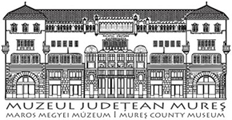Marisia - Maros Megyei Múzeum Évkönyve 29/3. (2009)
Rezi Botond, Nagy József-Gábor: Rescue Excavations at Chinari "Mociar" (Mureş County)
102 Rezi botond, Nagy József-Gábor by concentric channelling32. In the second phase of the Gáva culture33 in the Upper Course of the Tisa River, the bitronconic vessel goes trough a changing process, the protuberances and the small handles under the rim disappear, the neck of the vessels becomes rarely or partially covered with horizontal channelling. At the same time the narrow channelling and the handles placed on the upper part of the body appear34. Taking into consideration the decreasing presence of the characteristic elements of the “dominating” bitronconic vessel, the penetration of the Gáva culture took place at the end of 11th century the begging of the 10th century B.C.35 The globular vessels were decorated with vertical (Fig. XIV/No. 50, 52) and oblique channelling on the body (Fig. XIV/No. 54)36. In the На В period under the influence of pottery from the Lower Course of Mure§ River or Banat Region37, the upper part of the body of the vessels becomes narrower and decorated with oblique channelling. The surface of miniature vessels is poor or medium smoothed, its decorated with vertical channelling (Fig. XIX/No. 101) horizontal incised decorations (Fig. XIX/No. 103) and oblique incisions (Fig. XIX/No. 102). The pottery fragments that couldn’t be included in any of the shape categories were analyzed based on the characteristic decorations. Stylistically there are two types of predominant decorations: channelling and incisions. The majority of the fragments are decorated with vertical channelling (Fig. XX/113, 119), oblique (Fig. XX/115; XXI/124), horizontal (Fig. XXI/122), garland (Fig. XX/114, 121; XXI/137), and one fragment with semicircular channelling (Fig. XXI/126). Some pottery fragments were decorated with incised lines in “fishbone” pattern (Fig. XXI/125, 133)38, others with incised parallel wavy lines on the body (Fig. XXI/110, 111, 13039, 13440 and 13641). This decoration has analogies in the Late Bronze Age from Hungary42 and in the Early Iron Age settlements from Transylvania at Red43, Ciceu-Corabia44, Poian “Kőhát”45, Teleac46 and Porumbenii Mari47. 32 Somotor, Tärgu Mure§ (Paulik 1968, 39, fig. 3, nr. 2-4); At Tärgu Mure§ “Fortress” in the courtyard of the reformed church, Al. Bogdan made archaeological excavations in 1963, and discovered pottery fragments, houses with hearth in the corner from Early Iron Age; at the south-west corner of the castle in 1994, M. Bläjan found pottery fragment from the early Hallstatt period, the materials were kept in the V. Lázár colection (Lazar 1995, 258, nr. LXXXVI. 1. C. b). 33 Kemenczei 1984, 96, in the chronological table it’s dated in Ha A2-Bi. 34 Patay 1976, 193 sqq. 35 Vasiliev 2008, 13 sq. 36 Gogältan - Isac 1995, 24, pl. IX, nr. 1-3, 25, pl. X, nr. 1-2; Gogältan 2001, 212, pl. V., nr. 5. 37 László 1973, 595. 38 Porumbenii Mari (Benkő 1992, 7. tábla/5). 39 Székely 1966, 53, pl. V, nr. 2, 3; Kalmar - Cri§an 1995, 754, pl. V, nr. 1. 40 Szabó 1996, 67, 12. kép/11; Kemenczei 1982, 81, Abb. 6/3, p 85, Abb. 8/8. 41 Szabó 1996, 67, 12. kép/13. 42 Baks “Temetőpart”, Nagykálló “Telekoldal” (Kemenczei 1982, 94 sq.); Priigy (Kemenczei 1984, 364, Abb. CLIV/ 20); Sajószentpéter “Vízmű” (Kemenczei 1984, 304, Abb. XCV/25) 43 The settlement from Reci was dated based on the axes found in Ha Bi (Székely 1966, 34), in Ha B|-B2 (Vasiliev 1983, 44; Vasiliev 1987, 65; Vasiliev 1992, 22; Vasiliev 1995, 96; Ardeu 1996, 211, nr. 160). 44 Vasiliev 1995a, 114, fig. 7/17, 118, fig. 11/11, 122, fig. 15/18. 45 Méder 2006, 59, Tafel 10/5. 46 Vasiliev et alii 1992, 227, fig. 31/15, 241, fig. 45/10, 12. 47 The settlement from Porumbenii Mari “Cetate” was dated in На В (Benkő 1992, 113), in Ha Bi based on the six axes discovered here (Vasiliev 1983, 44; Vasiliev 1992, 22; Ardeu 1996, 210, nr. 153).
